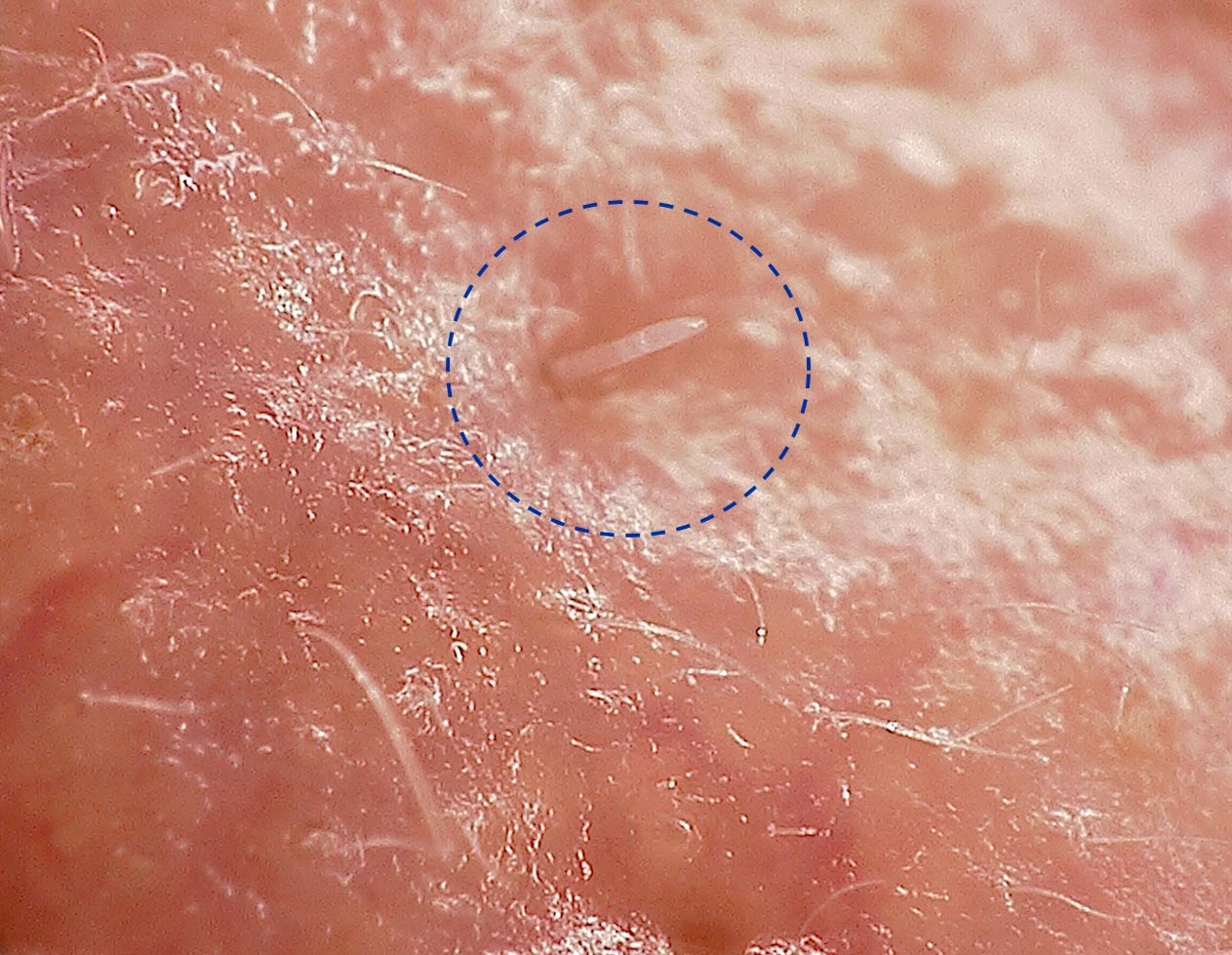Cats get ear mites through direct contact with infected animals or contaminated objects. Ear mites are small parasites that can easily spread from one cat to another.
Ear mites are a common problem that can affect cats of all ages. These tiny parasites, scientifically known as Otodectes cynotis, live and reproduce inside the ear canal of cats. While they are microscopic in size, the discomfort they cause can be substantial.
Ear mites are highly contagious and can be easily transmitted from one cat to another through close contact or sharing bedding, toys, or other objects. They thrive in the warm and moist environment of a cat’s ear, causing irritation, itching, and inflammation. If left untreated, ear mite infestations can lead to more serious complications. Therefore, it is important for cat owners to be aware of the causes, symptoms, and treatment options for ear mites to ensure their feline companions’ well-being.
The Basics Of Ear Mites In Cats
Ear mites in cats are a common problem that can cause discomfort for our feline friends. These tiny parasites, known as Otodectes cynotis, are easily transferred between cats through close contact. Ear mites live in the ear canals and feed on the wax and oils present.
As a result, cats may experience intense itching and irritation. Some common symptoms of ear mite infestation include excessive scratching, head shaking, a dark waxy discharge, and even hair loss around the ears. If left untreated, ear mites can lead to secondary infections.
It is important for pet owners to recognize the signs of ear mites in cats and seek veterinary treatment. A veterinarian can perform a thorough examination and prescribe appropriate medication to eliminate the mites and help alleviate the discomfort for our furry companions.
Regularly cleaning a cat’s ears and maintaining good hygiene can also help prevent ear mite infestations.
How Do Cats Get Ear Mites Naturally?
Ear mites in cats occur naturally through close contact with infected felines. The life cycle of these tiny parasites involves four stages – egg, larva, nymph, and adult. The mites can easily transfer from one cat to another, especially during interactions, grooming sessions, or sleeping together.
These minuscule pests can cause significant discomfort and health issues for cats, ranging from ear irritation and itching to infections and inflammation. It is crucial to identify and treat ear mite infestations promptly to prevent their spread to other pets in the household.
Regular check-ups and thorough cleanings can help control and prevent the recurrence of ear mites.
Common Causes Of Ear Mite Infestation In Cats
Ear mite infestation in cats can be caused by contact with infested animals. Cats that come into contact with other infected animals, such as strays or outdoor cats, are at a higher risk of developing ear mites. Another common cause is the sharing of bedding or grooming tools.
When cats share these items with other cats that have ear mites, they can easily become infested themselves. It’s important to regularly clean and sanitize bedding and grooming tools to prevent the spread of ear mites. Additionally, providing a clean and hygienic environment for your cat can also help reduce the risk of ear mite infestation.
Regular examination of your cat’s ears and prompt treatment if ear mites are detected is key to keeping your furry friend healthy.

Credit: scitechdaily.com
Recognizing The Signs Of Ear Mite Infestation
Ear mites in cats can cause various signs, such as constant scratching and excessive head shaking. These actions are attempts to relieve the irritation caused by the mites. Another indication of ear mite infestation is redness and inflammation in the ears.
If you notice your cat displaying these symptoms, it is crucial to take prompt action. Consulting a veterinarian is vital to confirm the presence of ear mites and begin appropriate treatment. Addressing the problem early can prevent the mites from spreading and causing further discomfort to your beloved feline companion.
Regular cleaning and maintenance of your cat’s ears can also help prevent ear mite infestations. By monitoring your cat’s behavior and appearance, you can quickly notice any signs of ear mites and ensure their well-being.
How To Diagnose Ear Mite Infestation In Cats
Ear mite infestation in cats can be diagnosed through a thorough examination by a veterinarian, who may conduct a microscopic analysis of the ear discharge. These mites, also known as Otodectes cynotis, are tiny parasites that feed on the wax and oils in a cat’s ear canal.
Cats can become infected with ear mites through direct contact with an infected animal or by sharing bedding or grooming tools. Symptoms of ear mite infestation include excessive scratching at the ears, head shaking, and a dark, crumbly discharge in the ears.
If left untreated, ear mite infestations can lead to secondary infections and discomfort for the cat. It is important to consult a veterinarian for an accurate diagnosis and appropriate treatment options to alleviate the discomfort and prevent further complications.
Potential Complications Of Untreated Ear Mite Infestations
Ear mites in cats can lead to potential complications if left untreated. These infestations can result in secondary bacterial or yeast infections, causing further discomfort and potential hearing loss. The mites irritate the ear canal, leading to inflammation that can affect the cat’s balance and overall well-being.
It is crucial to address ear mite infestations promptly to avoid these complications and minimize any long-term damage to the cat’s health. Regular check-ups and preventative measures can help ensure the early detection and effective treatment of these pesky parasites.
By maintaining good ear hygiene and seeking veterinary care as soon as symptoms arise, cat owners can help their furry friends avoid the complications associated with untreated ear mite infestations.
Treatment Options For Ear Mite Infestations
Ear mites in cats can cause discomfort and irritation. Treatment options include prescription medications and home remedies. Prescription medications are effective in eliminating ear mites, and your veterinarian can recommend the most suitable one for your cat. These medications usually come in the form of ear drops or topical solutions.
They work by killing the mites and soothing inflammation. Home remedies and natural treatments can also be used to complement the prescribed medication. These may include gentle cleansers or natural oils that help clean the ears and promote healing. It’s important to follow your veterinarian’s guidance and complete the full course of treatment to ensure complete eradication of the mites.
Regular ear checks and routine cleaning can help prevent reinfestation.
Preventing Ear Mite Infestations In Cats
Ear mites can be a common problem for cats, but there are ways to prevent infestations. Regularly cleaning and inspecting your cat’s ears is essential. This helps to identify any signs of mites early on. Furthermore, it is important to minimize contact with stray or infested animals.
This reduces the risk of transferring mites to your cat. By following these preventative measures, you can ensure the well-being of your furry friend and keep their ears mite-free. So, make sure to include ear cleaning in your cat’s regular grooming routine and be cautious of their interactions with other animals.
Additional Tips For Managing Ear Mite Infestations
Ear mites in cats can be managed by treating other pets in the household and cleaning the environment. Ensure all pets receive proper treatment to prevent reinfestation. Clean and disinfect bedding, toys, and other areas where mites may be present.
Use pet-safe cleaning products and wash items in hot water. Vacuum carpets, furniture, and any other areas where mites can hide. Regularly clean the ears of all pets to remove mites and debris. Monitor pets for signs of scratching, head shaking, or discharge from the ears.
If infestation persists, consult a veterinarian for further treatment options. By taking these additional steps, you can effectively manage ear mite infestations in your household and promote the well-being of your furry friends.
Frequently Asked Questions For How Do Cats Get Ear Mites
What Are Ear Mites In Cats And How Do They Get Them?
Ear mites are small parasites that infest a cat’s ear canal, causing discomfort and irritation. Cats can get ear mites through direct contact with infected animals or objects, such as bedding or grooming tools. Infected cats may experience itching, redness, and a dark discharge in their ears.
Can Ear Mites Be Transmitted From Cats To Humans?
No, ear mites are species-specific and cannot be transmitted from cats to humans. However, if your cat has ear mites, it’s crucial to take precautions and maintain good hygiene to prevent any potential spread of other parasites, like fleas or ticks, which can affect both humans and pets.
How Can I Tell If My Cat Has Ear Mites?
Common signs of ear mites in cats include excessive scratching around the ears, shaking of the head, visible dark discharge resembling coffee grounds, and redness or swelling in the ear canal. If you notice these symptoms, it’s important to seek veterinary care for proper diagnosis and treatment.
Are Ear Mites Contagious To Other Pets In The Household?
Yes, ear mites can be highly contagious to other pets in the household, especially cats and dogs. Direct contact with an infected animal or sharing objects such as bedding or toys can result in the spread of ear mites. It’s crucial to treat all pets at the same time to eradicate the infestation completely.
Conclusion
Ear mites can be a pesky problem for our feline friends, causing discomfort and irritation. Knowing how cats get ear mites is crucial to preventing and treating this common issue. These tiny parasites are often transmitted from one animal to another through direct contact, making outdoor cats more at risk.
Grooming or close interactions with infected animals can also lead to infestations. Regular cleaning and inspection of your cat’s ears can help catch ear mites early on and prevent them from spreading. In addition, keeping your cat’s living environment clean and free from pests can minimize the risk of infestation.
If you suspect your cat has ear mites, consult with a veterinarian for proper diagnosis and treatment options. Remember, prevention is better than cure, so take proactive measures to protect your furry friend’s well-being.



